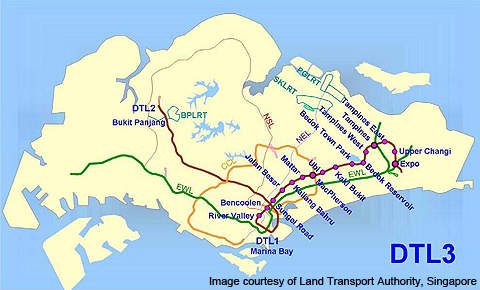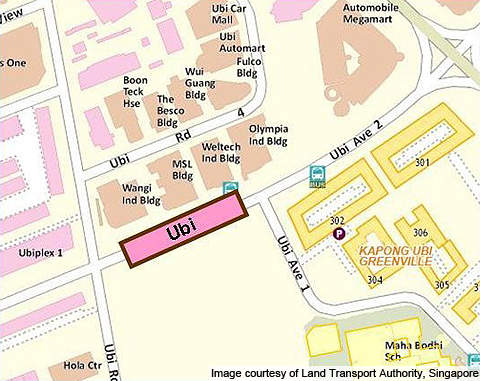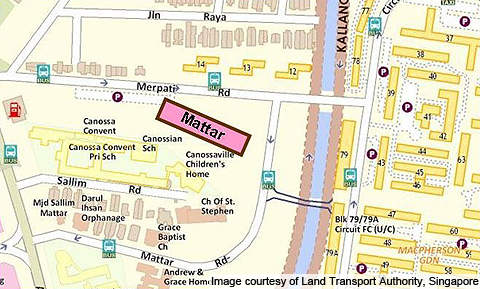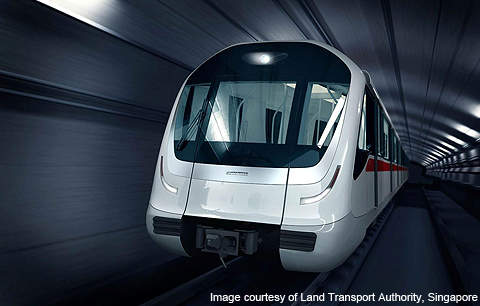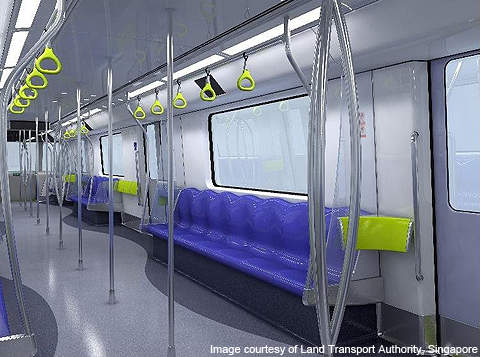The Downtown Line Stage 3 (DTL3) is a 21km, underground, automatic, driverless metro in Singapore. Initiated by the Land Transport Authority (LTA), DTL3 aims to improve rail connectivity between the eastern corridors and the central business district (CBD) while developing the urban Marina Bay area.
The project forms the last stretch of the 42km Down Town Line (DTL) which is under construction in two stages. It was approved by the LTA in 2007 at an estimated cost of S$12bn. Stage 1 is 4.3km long with six stations and is scheduled to be completed in 2013. Stage 2 is 16.6km long with 12 stations. It is expected to be completed in 2015. DTL will create direct travel lines from north-western and eastern areas of Singapore to the populated CBD region.
Construction of DTL3 started in November 2011 with the line opening scheduled for 2017.
Lines and routes
The DTL3 route alignment was announced in October 2010. The route will pass through 16 stations at River Valley, Bencoolen, Sungei Road, Jalan Besar, Kallang Bahru, Mattar, MacPherson, Ubi, Kaki Bukit, Bedok Town Park, Bedok Reservoir, Tampines West, Tampines, Tampines East, Upper Changi and Expo.
Project details
DTL3 will feature interchanges at the MacPherson, Tampines and Expo stations, linking it to the Circle Line (CCL) and East West Line (EWL).
DTL 3 will link with CCL at the Macpherson interchange station. This will mainly benefit the commuters travelling from north and north-west Singapore to the industrial areas of Ubi and Kaki Bukit, which are just one or two stations away from the Macpherson interchange. At present, workers in this region mainly depend on bus transport.
Interchanges at Tampines and Expo stations on the EWL line will improve passenger access to the Tampines Regional Centre and Changi Business Park respectively. The Tampines interchange will significantly reduce the travel time from Tampines to Kaki Bukit on the EWL line from 25 minutes by bus to 10 minutes on the DTL.
Work on DTL3 commenced with the construction of Expo station in November 2011.
Infrastructure
All the DTL3 stations will have platform screen doors. Lifts will be provided from the station entrance to the concourse level and from the concourse to platform.
Elevators will be supplied by Otis Elevator Company (Singapore) under a consolidated DTL contract worth S$22.7m for the supply, installation and commissioning of 108 lifts. Unlike conventional lifts with a machine room next to the lift shaft, these will not have a machine room. This will facilitate better use of space within the station area.
The stations will also feature heavy duty escalators designed with energy saving features. These will facilitate the movement of heavy commuter traffic during peak hours. Escalators are being supplied under a common contract worth S$100.3m signed with Constructions Industrielles de la Mediterranee (CNIM).
Station operations, power supply, fire protection and tunnel ventilation will be controlled using an integrated supervisory control system (ISCS). Singapore Technologies Electronics is providing the ISCS under a S$28.7m contract.
Rolling stock
DTL3 will be serviced by Bombardier trains that operate on 750v DC third rail power system. A consolidated contract worth S$570.7m was awarded to Bombardier in 2008. The contract involves supply of 73 fully automatic and driverless trains which will operate on all the three stage routes.
Signalling and communications
The signalling system on the line is being provided by Westinghouse Brake and Signal Holdings under a S$287.5m consolidated contract. The communication system includes sub-systems such as radio, video surveillance, public address, telephones and travel information which are necessary to fully support the driverless automatic metro.
Singapore Technologies Electronics is responsible for the installation of signalling systems along the entire DTL route under a S$123.3m consolidated contract.
Contractors
International engineering, infrastructure and project management consultancy, Meinhardt Group was awarded a contract in January 2010 under which the company will offer accredited checking services for four underground stations in addition to being the lead consultant for the construction of six underground stations.
Another contract, valued at S$3.15m, was awarded in February 2011 to Tritech Engineering & Testing (Singapore) for delivery and installation of geotechnical instruments. It also includes monitoring services for DTL3 package B which involves work related to stations at Mattar, MacPherson, Ubi, Kaki Bukit and Bedok Town Park. The contract is for a term of five years (February 2011 to December 2016) with a six-month defect liability period.
Sata Kogyo of Singapore secured a S$268.68m contract to construct the Bedok Town Park Station and its associated tunnels in March 2011. It was also contracted to construct Mattar station for S$199.85m. The Mattar station will be located on Merpati Road and will serve the residents and students of the Circuit Road area.
Ubi station and the associated tunnels will be constructed by SK Engineering & Construction of Korea under a S$161.71m contract. The new station will serve the residents of Kampong Ubi Greenville and the industrial workers in the nearby region.
SK Engineering is also constructing the tunnels between Beauty World and Hillview stations of DTL Stage 2. In July 2011, S$582.07m worth of civil contracts were awarded to GS Engineering & Construction and KTC Civil Engineering & Construction. GS Engineering & Construction is responsible for the construction of Tampines East and River Valley stations, and associated tunnels. KTC Civil Engineering & Construction is responsible to construct the Tampines station.

